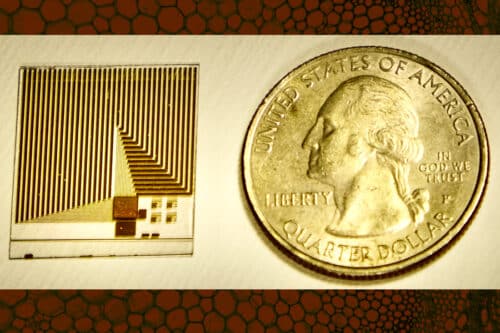The device’s capability to detect molecules similar to cell receptors could revolutionize routine early screening for cancers and other diseases.

Diagnostic sensors use antibodies or aptamers to capture target molecules, but they have limitations. Scientists explore an alternative approach using receptor proteins from cell membranes, which monitor the environment. However, working with these proteins is difficult as they need detergent suspension to maintain their structure after removal from the cell membrane.
Researchers at MIT have created an innovative sensor capable of detecting molecules similar to those identified by naturally occurring cell receptors. The researchers have combined new technologies to develop a prototype sensor detecting immune molecule CXCL12 at low concentrations, paving the way for routine screens in cancer detection or biomimetic electronic “noses.” Inspired by cell membranes, the team have modified receptor proteins on graphene transistors in a device, detecting target molecules and transmitting data to a computer or smartphone. According to the researchers, the sensor’s versatility allows it to analyze various bodily fluids, screening for multiple targets by utilizing different receptor proteins.
Free from membranes
The team attached water-soluble versions of receptor proteins to a surface. They used bacterial S-layer proteins. When crystallized, these S-layer proteins formed coherent monomolecular arrays on the surface and could be fused with other proteins. In this study, they densely immobilized a water-soluble version of the receptor protein C-X-C chemokine receptor type 4 (CXCR4), which binds to important target molecules like C-X-C motif chemokine ligand 12 (CXCL12) and a Human Immunodeficiency Virus (HIV) coat glycoprotein, involved in virus entry into human cells, and linked to several human diseases, including cancer. The researchers named their sensing technology RESENSA (Receptor S-layer Electrical Nano Sensing Array).
Sensitivity with biomimicry
Crystallized S-layers are versatile and can be deposited on almost any surface. The researchers used them on a graphene-based chip known for susceptible detectors. They have created a dual layer of crystallized S-layer proteins with water-soluble receptor proteins. When a target molecule binds to a receptor protein, it alters the electrical properties of graphene, allowing easy quantification and data transmission to a connected computer or smartphone. The researchers envision a portable device integrating with cell phones and computers, enabling at-home tests for quick medical insights.





